1,577 days, 2,409 entries ...
Newsticker, link list, time machine: HOLO.mg/stream logs emerging trajectories in art, science, technology, and culture––every day
“I can’t help you with your film because people just want a gay film or lesbian film, and this mixture of sexuality in your film is just not going anywhere.”
“Ten Thousand Suns,” the 24th edition of the Biennale of Sydney opens at venues across the New South Wales capital. Artists including Mona Al Qadiri, Dumb Type, Özgür Kar, and Lawrence Lek are featured at the White Bay Power Station flagship exhibition, which repurposes the former coal-fired facility as a cultural hub. Excitingly, Australian cyberfeminism originators VNS Matrix present a selection of their works from the last four decades on banners, displays, and zines throughout the venue (image).
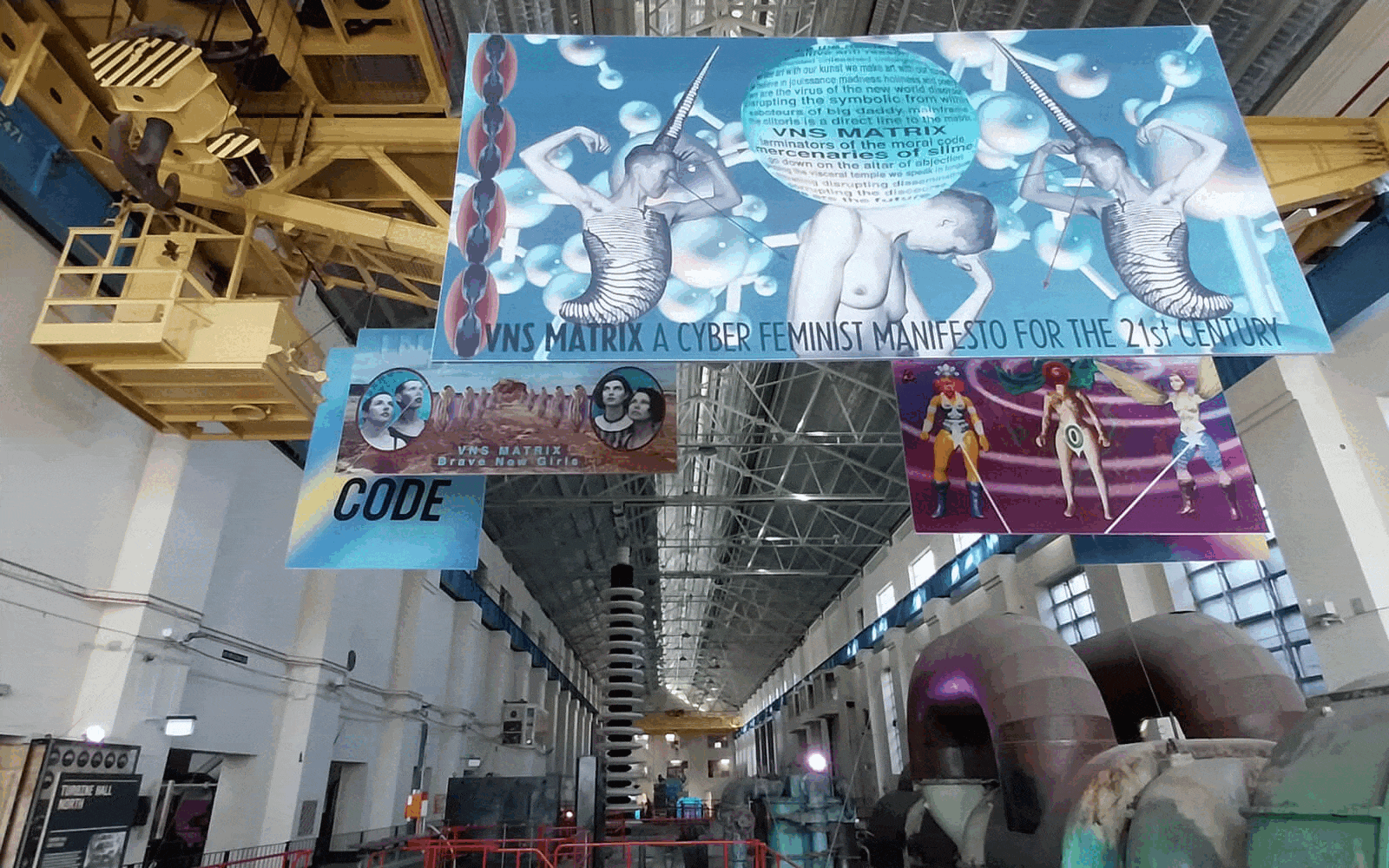
Eleanor Drage & Kerry McInerney
The Good Robot
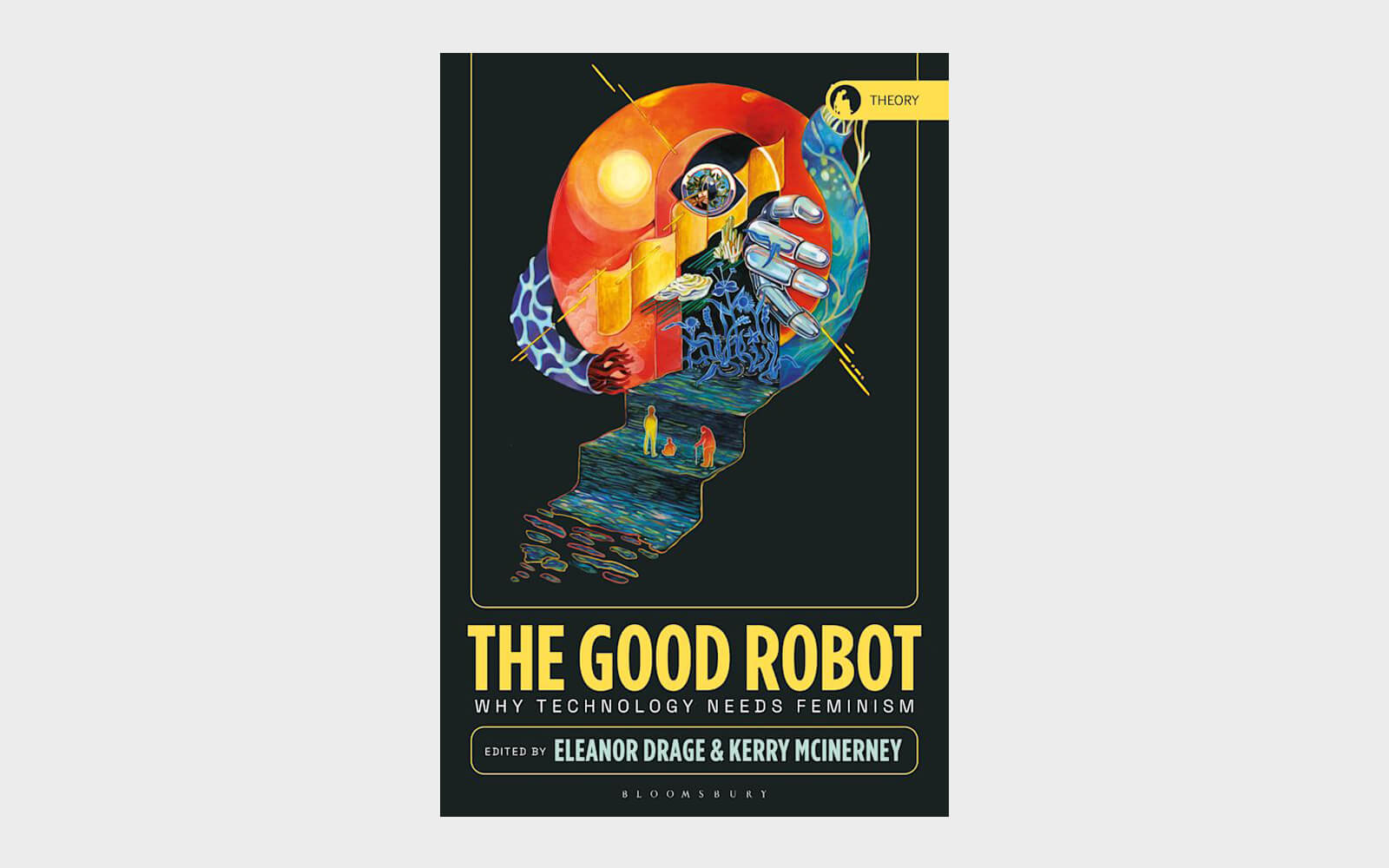
“Our technological culture keeps casting these artificial intelligences either as mothers, catering and caring, or as female demons that consume men, succubus-like, luring them to half-deaths, to a constant state of orgasm—a hijacked limbic system suspended in pleasure.”
The Hole’s yearly thematic group show, “Fembot,” opens at the New York gallery’s Bowery location, celebrating technology and the female form. “Representations of the female body are as vast as the internet, from futuristic robots to porous, sweaty flesh,” writes gallerist Kathy Grayson about the works of Salomé Chatrior, Auriea Harvey, Jordan Homstad, Faith Holland, Nicole Ruggiero, and others that range from “cyborg goddesses” to post-human grotesques. Case in point: CGI artist Emma Stern’s 3d-printed ‘amphemme’ Brooke (2023, image).
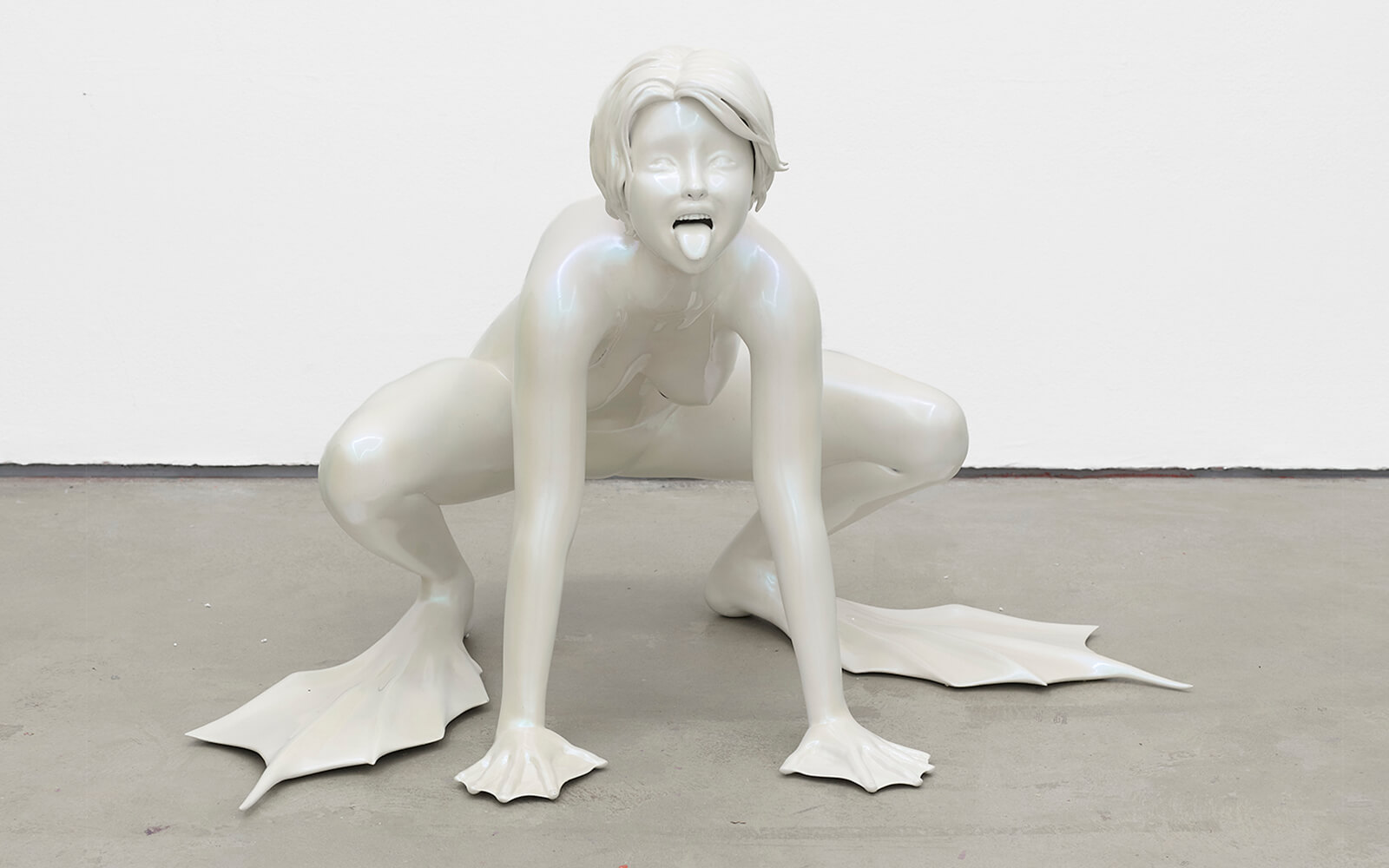
Mindy Seu
Cyberfeminism Index
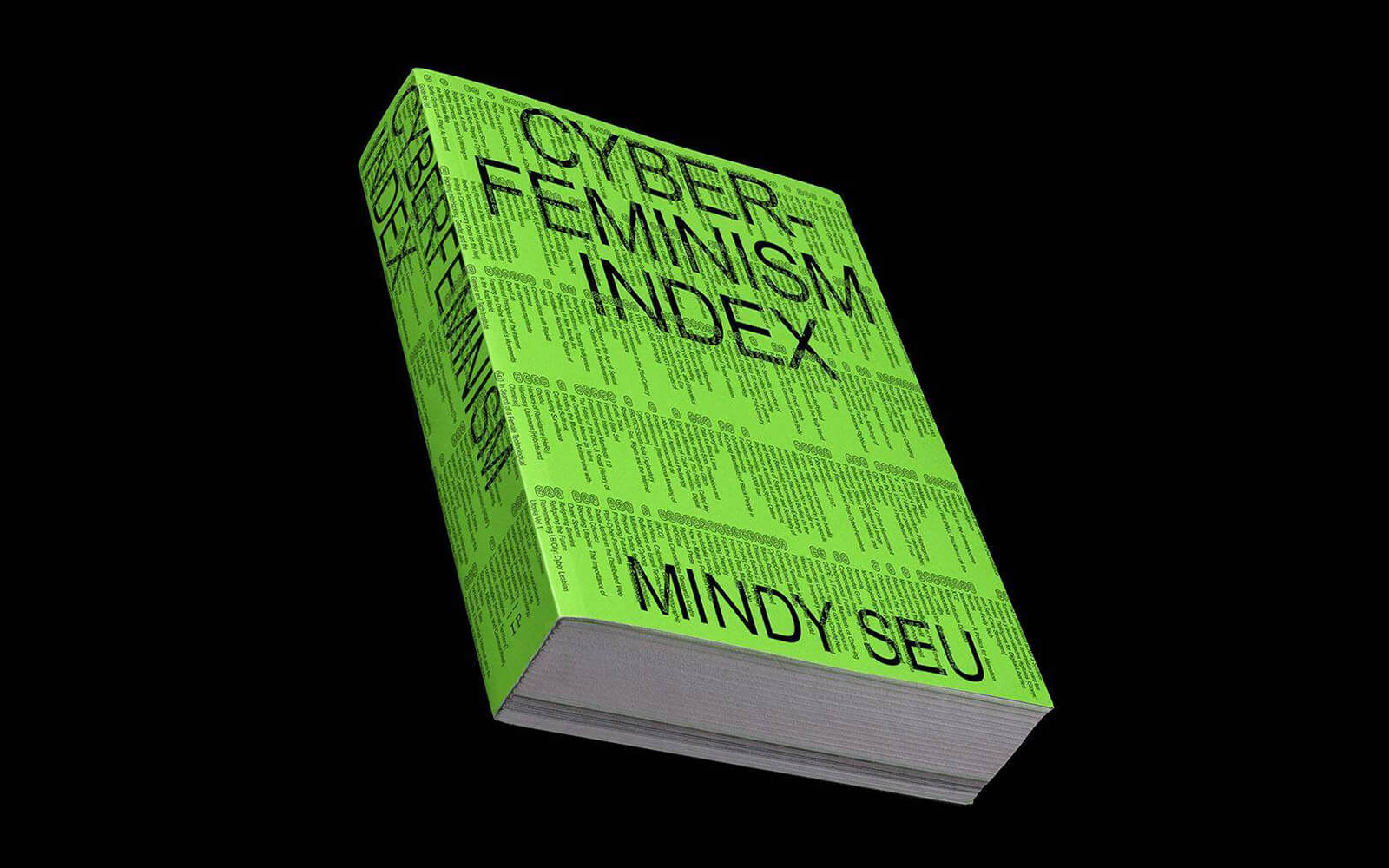
“I think the obsession with immutability and stable identity, which is being imposed on commercial blockchain projects, is very un-cyberfeminist and it’s very un-Satoshi Nakamoto. So that’s definitely a site of a struggle.”
“Perhaps, there is more common ground between the hackers and the witches, the programmers and the psychics. As Tolbert put it: ‘What is technology, if not a way for an individual person to uncover answers?’”
“From AI bots to water purification systems, much of Hershman Leeson’s oeuvre has simultaneously paid homage to the radical creative power of the female body and alluded to the thorny widespread feminization of ‘service’ bots. ”
“We just accept that as a truth, that estrogen produces femininity and we don’t question it. For me, the best strategy as citizens is to reject these categories and to create room for more definitions, for more subjectivities.”
“It’s like a perpetual project that refers to the labour of building an archive that can sustain itself, and also being open to revision forever as a feminist, anti-racist and anti-colonial project.”
href zine 2: Landscapes, Symbioses, Technoid Natures
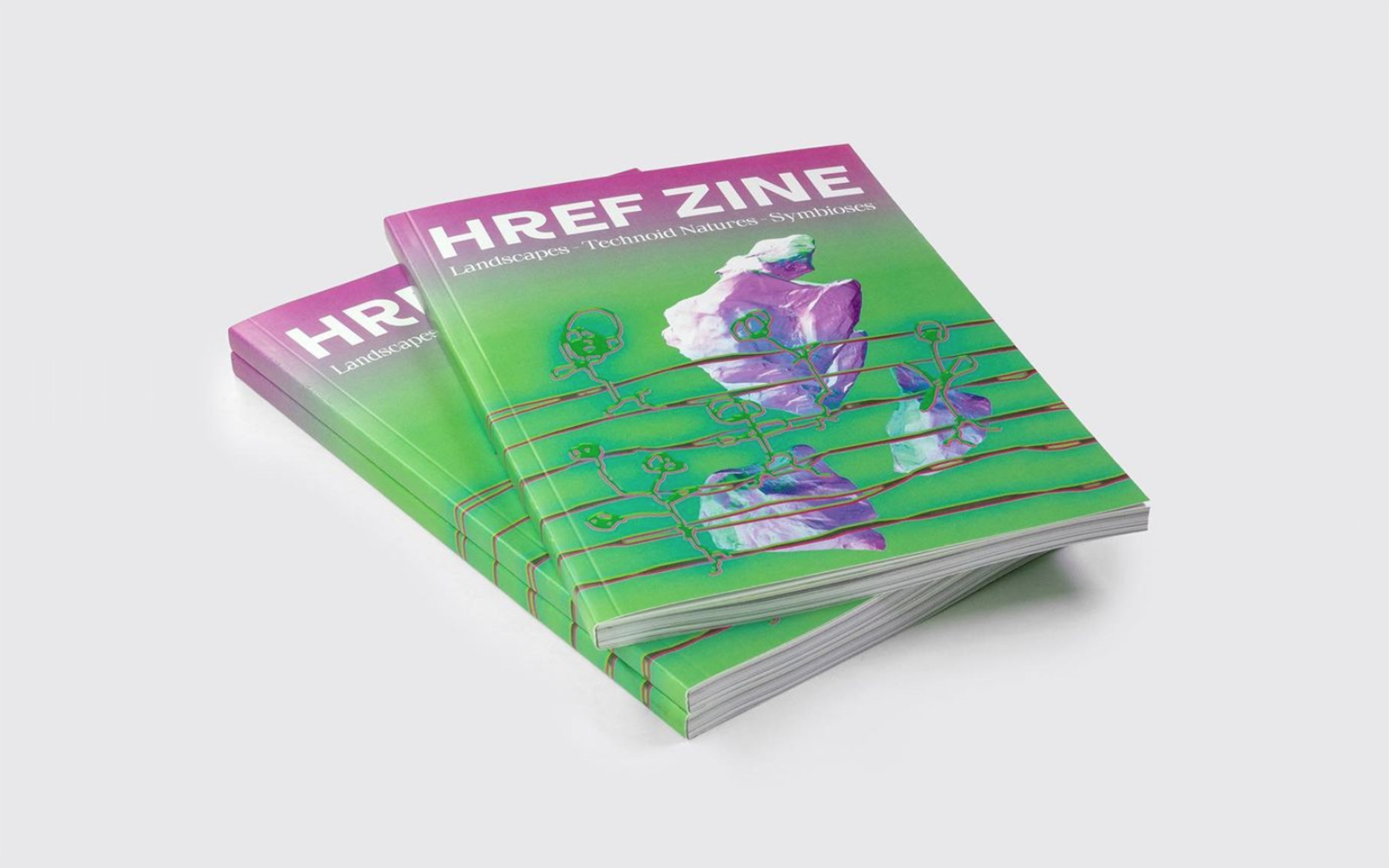
A database of myriad cyberfeminism(s)—post-binary, feminist servers, cyborg witches—from 1990–2020, Cyberfeminism Index launches. Facilitated and gathered by Mindy Seu and commissioned by Rhizome, the site offers a deep archive of hundreds of critical gender studies texts, manifestos, and inititiatives. To aid in navigating its voluminous collection, its interface includes curated ‘collections’ by key voices including original cyberfeminists VNS Matrix, bio-hacker Mary Maggic, and the xenofeminist collective Laboria Cuboniks.
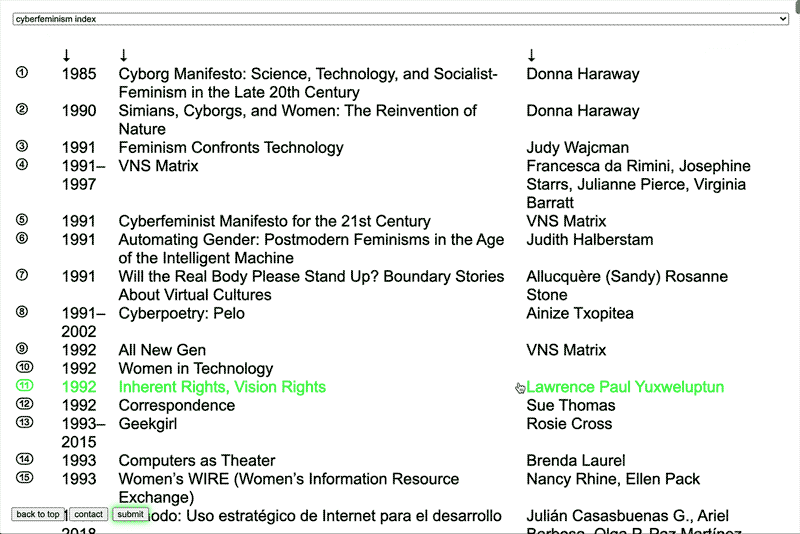
“A female artist sits in the tradition of female labour in early computer history—women were often used in the early half of the twentieth century as ‘human computers,’ working out calculations manually.”
Daily discoveries at the nexus of art, science, technology, and culture: Get full access by becoming a HOLO Reader!
- Perspective: research, long-form analysis, and critical commentary
- Encounters: in-depth artist profiles and studio visits of pioneers and key innovators
- Stream: a timeline and news archive with 1,200+ entries and counting
- Edition: HOLO’s annual collector’s edition that captures the calendar year in print
